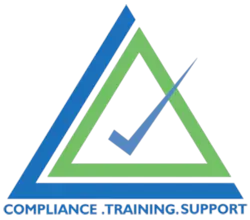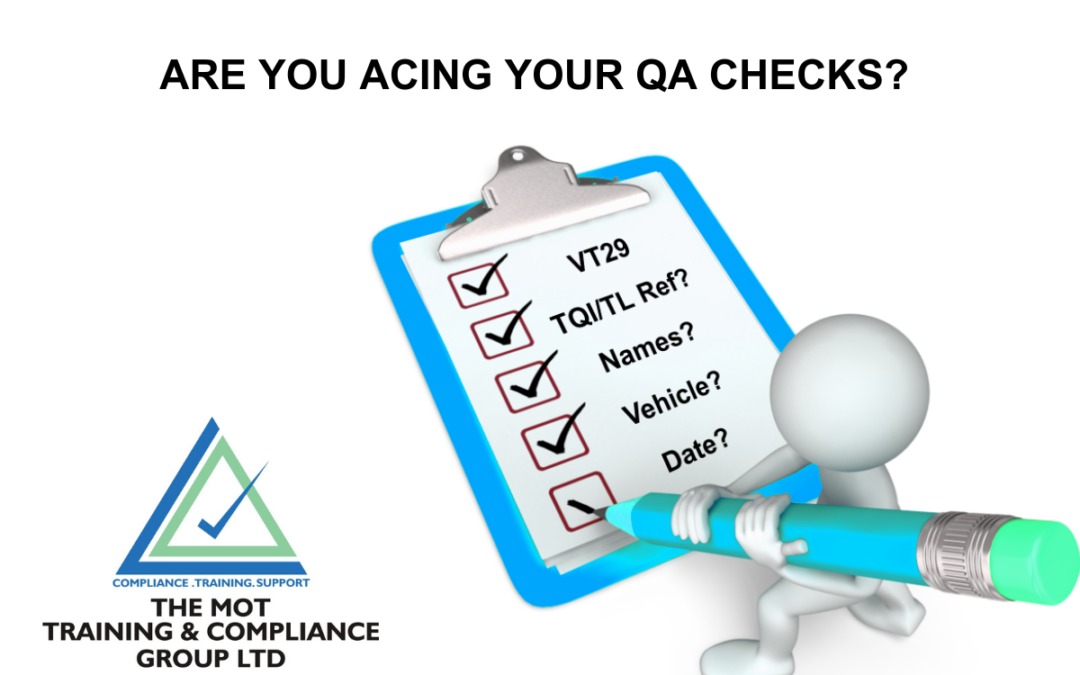One of the biggest issues that we find on site visits is that quality control checks are not being done frequently enough (or sometimes at all). When they are done, it’s often seen just as a tick box exercise, rather than an opportunity to check the standards of work (which are probably absolutely fine but this should never be taken for granted). Effective quality assurance in vehicle testing can be a great asset to a Test centre and provide opportunities for teaching and learning.
It’s also vital to record quality control activity accurately, to ensure there’s a clear trail of checks and follow-up actions, and to maintain high quality standards across your MOT tester team. This level of diligence reflects the professionalism expected within the automotive industry and helps ensure that all work meets specified quality standards.
If you’re unsure on how to carry our QC checks properly, this guide on how to carry out MOT QC checks gives a clear step-by-step overview.
Have you ever looked at how are QC checks carried out in your workshop vs how the DVSA would like you to carry them out?
How often should you be carrying out QC Checks?
The MOT guide advises that there should be a minimum of one check per tester every two months for an experienced tester carrying out 2-3 tests per day. Most testers don’t fall into this category so workshops should aim for QC checks to be carried out monthly where possible. Don’t work to minimum standards.
QC Check Paperwork we find vs Paperwork we would like to find!
What we find:
- VT29 with the words “QC” written on it but nothing else.
- VT29 checklist neatly ticked but no names, date, vehicle details etc.
- A random bit of paper with date, time, vehicle registration, tester name and QC written on it.
What should we find in your QC check paperwork?
- VT29 with notes and comments regarding what the QC saw/discussed with the tester.
- A direct reference to the Test Quality Information (TQI) report and/or the Test Log (TL) report on every check.
Many sites spend time printing and highlighting anomalies on their monthly TQI and TL reports and then do nothing with them. The person/people carrying out the QC checks needs this important information in order to be effective.
Here’s an example of why it’s important:
A Tester has a low failure rate for brakes and a high failure rate for seatbelts on the TQI report. There are also some very fast re-test times on the TL report.
This information is shared with the Quality Controller.
During the observed MOT test the QC closely watches how the tester is checking brakes and seatbelts in particular.
At the end of the test (a tester is not to be distracted during an MOT) he discusses these items with the tester. They might even look in the MOT Manual for guidance.
Any discussion points can be documented on the QC report (copy of the second page of the VT29) along with the conversation about retest times.
“TQI shows low brakes/high seatbelt failures.
I closely observed the test methods used, and all seem to be in line with the MOT Manual. We checked Sections 1 and 7 and both agreed that the correct criteria are being used.
We discussed the need for a full re-inspection of the failure items while the vehicle is logged onto the MTS rather than on the service ramp and agreed that this would happen more frequently in the future”
Both the Tester and the Quality Controller then sign the report.
The DVSA are not looking for an A-level essay here – just a few points – it’s not a spelling test either!
Once you have the notes, don’t just file them so that they never see the light of day again – go back over the last 4 months each time to see if there are recurring patterns, as it may help to identify a training need for your team and support continuous improvement. In a fast-evolving automotive industry, continuous review and improvement of internal processes is essential.
If there isn’t much information coming from the TQI/TL reports, then you could use a topic from the current annual training as a discussion/training opportunity.
Here’s an extract from the MOT Guide – Section M
This information is from The MOT Guide – Section M – System Rules and User Roles.
Quality control (QC)
Role purpose
To check the correct standards are applied to the MOT tests carried out within their VTS and where shortcomings are identified to ensure a process is followed to ensure corrective action is taken.
Who holds the role
Quality Control checks are carried out by a person who holds a Level 2 qualification in MOT
Testing or equivalent for the appropriate class and comply with the requirements for annual training and assessments. They may be designated from the list of testers at the site or use a Third Party.
Method of appointment
Quality Control is a process. There is not a specific role within the MOT testing service for Quality Control.
The person selected to carry out the tasks for quality control is chosen by the Site Manager/AEDM/AED and is a part of the AEs Quality Management system.
Tasks and Responsibilities
The QC will check that at least a sample of MOTs carried out by the testers in a VTS are checked to ensure that the correct routines and procedures are followed and that the correct standards are applied.
Duties may include but are not limited to:
Quality Audits
Carry out regular quality control checks:
- Closely watch all parts of the test as they are carried out.
Or
- Closely observe the testing process and conduct a full re-examination of the vehicle to check standards application.
Record Shortfalls
Detect and record any shortfall in the quality of test standards. On completion of an observed test, any difference in the test result, test standards or observed defects between the tester and QC must be discussed and resolved with the tester prior to the test result being entered on MTS.
Remedial action
Take prompt remedial action when shortfalls are found:
- Record the result of quality assurance checks
- Remedial action must be recorded and agreed.
Escalate issues
Escalate issues where necessary:
- Where unusually high numbers of failings are found – it would be expected that the frequency of checks is increased until such time as it is evidenced that the problem has now been solved.
- Escalate issues that cannot be resolved or are of a severity that they should be brought to the attention of the site manager or AEDM.
If you’d like help getting your QA checks to be more effective, get in touch: karena@themotgroup.co.uk

